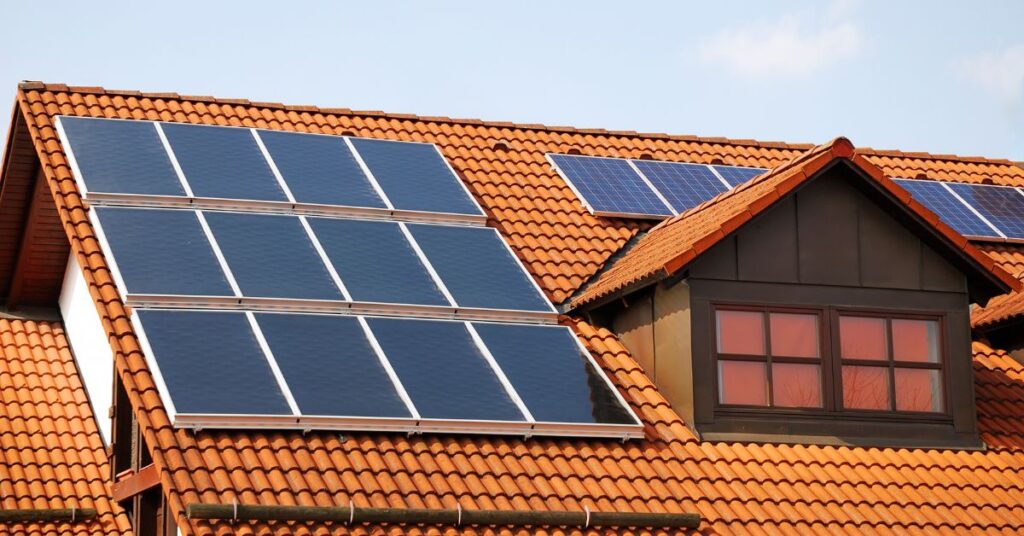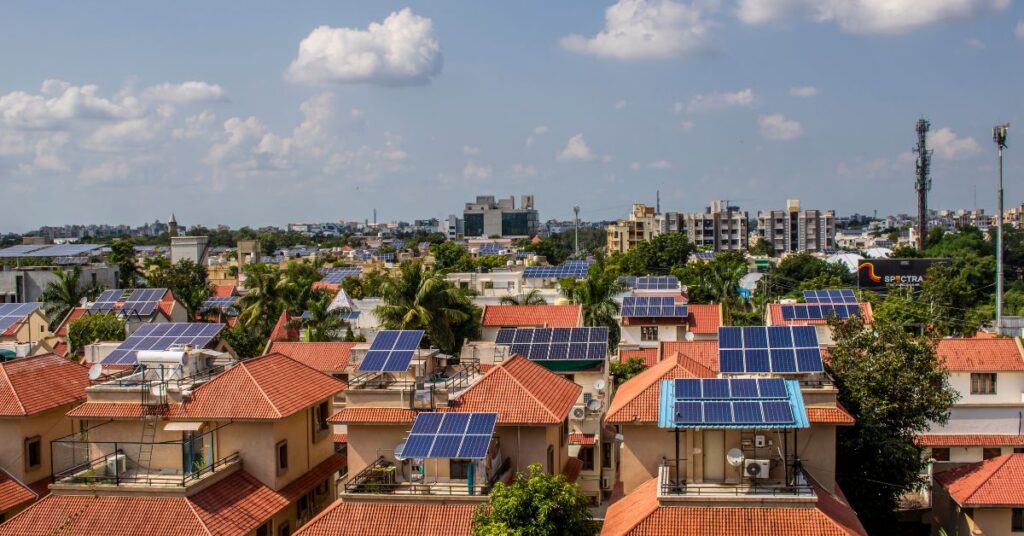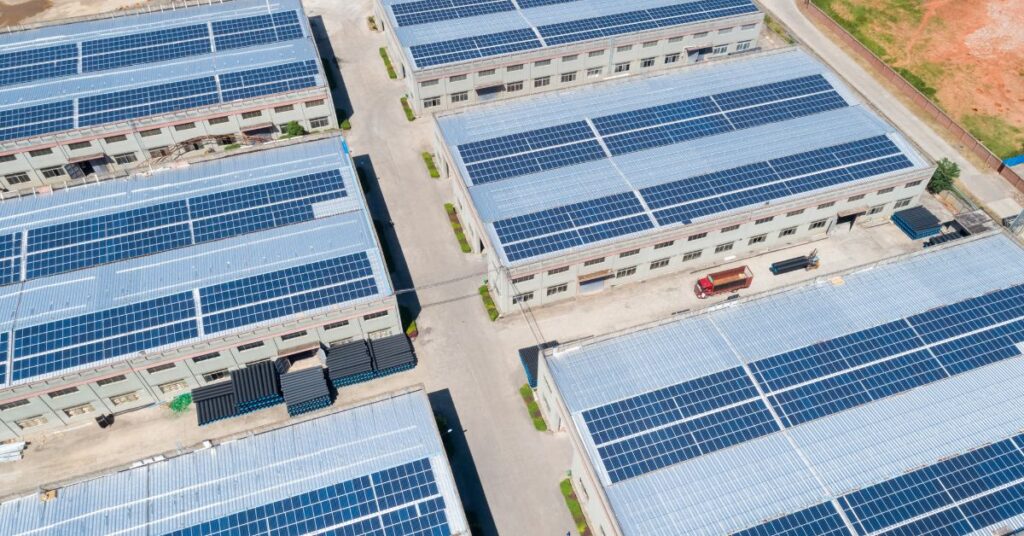Process and Requirements of a Rooftop Solar System Installation in Delhi NCR
Know the details about the Process and Requirements of a Rooftop Solar System Installation in Delhi NCR, Learn about the comprehensive process and essential requirements for rooftop solar system installation in Delhi NCR. This guide covers each step, from initial assessment and site survey to design, approvals, and installation.
Understand eligibility criteria, necessary permits, financial incentives, and maintenance tips to ensure a smooth setup. Discover how government schemes and net metering policies make switching to solar energy cost-effective and environmentally friendly. Whether you’re a homeowner or a business, this overview simplifies going solar in the Delhi NCR region, helping you make informed decisions for sustainable energy savings and a greener future.
Table of Contents
Process and Requirements of a Rooftop Solar System Installation in Delhi NCR
The increasing demand for renewable energy solutions has placed solar power at the forefront of sustainable energy initiatives in India. With the rising electricity bills and an ever-growing concern for environmental sustainability, homeowners, businesses, and institutions in Delhi NCR (National Capital Region) are increasingly turning towards rooftop solar system installations.
Rooftop solar power systems not only reduce dependency on conventional energy sources but also provide numerous long-term economic and environmental benefits. The Indian government, along with state-level initiatives, has been promoting the adoption of solar energy by offering subsidies and financial incentives. In this blog post, we will cover the step-by-step process of installing a rooftop solar system in Delhi NCR, the requirements, and the key benefits involved.
Why Solar Energy?
Before diving into the process of installing a rooftop solar system, it is crucial to understand why solar energy is a smart investment:

- Cost Savings: The installation of a rooftop solar system significantly reduces electricity bills. Delhi NCR experiences ample sunlight for the majority of the year, making solar energy a reliable and cost-effective solution.
- Environmental Impact: Solar energy is a clean, renewable energy source that does not emit harmful greenhouse gases or pollutants. By shifting to solar, one can reduce their carbon footprint and contribute to the fight against climate change.
- Energy Independence: With a rooftop solar system, you can generate your own electricity and reduce dependence on the conventional energy grid. This provides a level of energy security, especially in regions where power outages are common.
- Government Incentives: The government of India and the Delhi state government provide incentives, such as subsidies and tax benefits, to promote the installation of solar panels. These incentives reduce the initial costs, making solar systems more affordable.
- Return on Investment (ROI): Solar panels generally have a lifespan of 20-25 years, and once the initial investment is recovered (usually within 4-6 years), the energy generated is essentially free. This makes it an excellent long-term investment.
Now that we understand the importance of solar energy, let’s delve into the process and requirements of installing a rooftop solar system in Delhi NCR.
Process of Installing a Rooftop Solar System in Delhi NCR
The installation of a rooftop solar system involves several stages, from assessing the site to connecting the system to the power grid. Here’s a step-by-step guide:
1. Site Assessment and Feasibility Study
The first step in the process is to assess the feasibility of installing a rooftop solar system on your property. The feasibility study includes:
- Roof Condition: The condition and structure of the roof are critical factors. A sturdy roof with sufficient surface area is required to support the solar panels. Any repairs or modifications to the roof should be done before installation.
- Shadow Analysis: Solar panels require direct sunlight to function efficiently. The installer will conduct a shadow analysis to ensure there are no obstructions (like trees, buildings, or chimneys) casting shadows on the roof during peak sunlight hours. Even partial shading can reduce the overall efficiency of the system.
- Orientation and Tilt: In India, solar panels are typically installed facing south to maximize sunlight exposure. The angle of tilt is also important for capturing maximum solar energy, and this will depend on your location’s latitude.
- Energy Needs Assessment: The installer will analyze your monthly electricity consumption to determine the size of the solar system you need. A system that is too small may not cover your needs, while a system that is too large could lead to energy wastage.
2. Design and Planning
Once the feasibility study is complete, the next step is to design the solar system. This stage involves:
- System Sizing: Based on your energy consumption and the available roof area, the installer will determine the optimal size of the solar power system (in kilowatts, kW). In general, a 1kW system can generate around 4-5 units of electricity per day in Delhi NCR, depending on sunlight availability.
- Component Selection: The main components of a rooftop solar system include solar panels, inverters, batteries (if needed for backup), and mounting structures. The installer will choose the best components based on your budget and energy requirements. There are two types of solar panels: monocrystalline and polycrystalline. Monocrystalline panels are more efficient but costlier, while polycrystalline panels are more affordable but slightly less efficient.
- Grid-Connected vs. Off-Grid: There are two main types of rooftop solar systems: grid-connected and off-grid. A grid-connected system is linked to the local electricity grid, allowing you to sell excess energy back to the grid. An off-grid system operates independently and requires battery storage to provide backup power when sunlight is insufficient.
3. Applying for Subsidies and Approvals
One of the major benefits of installing a rooftop solar system in Delhi NCR is the availability of government subsidies and incentives. The Ministry of New and Renewable Energy (MNRE), along with state-level authorities like the Delhi Solar Energy Corporation (DSEC), provides subsidies to reduce the cost of installation.
- Subsidy for Residential Solar Installations: As of the latest guidelines, residential consumers are eligible for up to 40% subsidy for systems up to 3kW capacity, and 20% subsidy for systems between 3kW and 10kW. It’s important to check the latest MNRE guidelines or consult with a certified installer to understand the applicable subsidy.
- Net Metering Approval: If you are installing a grid-connected system, you will need to apply for net metering. Net metering allows you to sell the excess electricity generated by your solar system back to the grid. This requires approval from the local distribution company (DISCOM) and involves installing a bi-directional meter to measure the electricity exported and imported from the grid.
- Other Approvals: In some cases, you may need additional approvals from the local municipal corporation, especially if you live in a high-rise building or a regulated area.
4. Installation of the System
Once the design is finalized, and all approvals are obtained, the actual installation of the solar system begins. This includes:
- Mounting the Panels: The solar panels are mounted on a structure that is securely fixed to the roof. The mounting structure must be strong enough to withstand wind and weather conditions. The panels should also be installed at the correct tilt and orientation to maximize sunlight exposure.
- Electrical Wiring: The electrical wiring is done to connect the solar panels to the inverter, which converts the DC (Direct Current) electricity generated by the panels into AC (Alternating Current) electricity that can be used by household appliances.
- Inverter Installation: The inverter is installed in a location that is easily accessible for maintenance and should be protected from extreme weather conditions.
- Battery Installation (if required): If you are installing an off-grid system or want backup power, batteries will be installed to store excess energy for later use. Lithium-ion batteries are preferred due to their longer life and higher efficiency.
5. Inspection and Commissioning
After the installation, the system undergoes a series of inspections to ensure everything is functioning properly and safely. This includes:
- Electrical Safety Checks: An electrical safety inspection is conducted to verify that the wiring and connections meet safety standards and that the system is properly grounded.
- Performance Testing: The installer will test the system to ensure it is generating the expected amount of electricity and that all components (including the inverter and battery) are functioning correctly.
- Commissioning: Once all tests are passed, the system is commissioned, and you can start generating electricity.
6. Connecting to the Grid and Net Metering
If you have installed a grid-connected solar system, the final step is connecting it to the local grid. The DISCOM will install the bi-directional meter required for net metering, and you will start receiving credits for the excess energy exported to the grid.
- Billing and Credits: With net metering, your electricity bill will reflect the amount of energy consumed from the grid minus the energy generated by your solar system. If your system generates more energy than you consume, you will receive credits that can be carried forward to the next billing cycle.
7. Maintenance and Monitoring
Although solar systems require minimal maintenance, regular cleaning, and inspections are necessary to ensure optimal performance. Dust and dirt accumulation on the panels can reduce efficiency, so it is advisable to clean the panels every few months.
- Performance Monitoring: Most modern inverters come with monitoring systems that allow you to track the performance of your solar system in real time. This helps you detect any issues early and ensures the system is performing at its best.
Requirements for Installing a Rooftop Solar System in Delhi NCR
To install a rooftop solar system in Delhi NCR, several technical, legal, and financial requirements must be met. These include:

1. Roof Space
Adequate roof space is essential for installing solar panels. Typically, 1kW of solar panels requires around 80 to 100 square feet of shadow-free roof area. If you are installing a larger system, you will need proportionally more space.
2. Solar Panels and Inverter
The quality of solar panels and inverters is critical to the system’s efficiency and longevity. It’s essential to choose panels and inverters that are certified by MNRE or other recognized agencies to ensure high quality. Both monocrystalline and polycrystalline panels are available in the market, with the former offering higher efficiency but at a higher cost.
3. Net Metering Application
For grid-connected systems, you must apply for net metering approval from the local DISCOM. The application process includes submitting documents such as:
- Property ownership proof
- Electricity bill
- Solar system details (design, capacity, components)
- Installation agreement with a certified solar installer
4. Compliance with Local Building Codes
Before installation, ensure that the solar system complies with local building codes and regulations. If you live in a high-rise building or an area regulated by local authorities, additional permissions may be required.
5. Financial Investment and Subsidy Applications
Installing a rooftop solar system requires a financial investment. The total cost will depend on the size of the system, the quality of components, and installation charges. However, with government subsidies and net metering benefits, the payback period is relatively short (usually 4-6 years).
It is important to apply for the MNRE subsidy through an approved vendor to take advantage of the financial incentives offered by the government.
Key Benefits of Rooftop Solar System in Delhi NCR
Investing in a rooftop solar system offers numerous benefits, including:

1. Reduction in Electricity Bills
By generating your electricity, you can be significantly reduce or even eliminate your electricity bills. The amount saved will depend on the size of your system and your household’s energy consumption patterns.
2. Government Subsidies
The government offers significant financial incentives in the form of subsidies, which reduce the initial installation cost and make the system more affordable for residential and commercial consumers.
3. Increased Property Value
Installing a solar power system can increase the value of your property. Prospective buyers are often willing to pay a premium for properties with lower operating costs and sustainable energy solutions.
4. Environmental Benefits
Solar power is a clean, renewable energy source that reduces carbon emissions and dependence on fossil fuels. By adopting solar, you contribute to a cleaner environment and help combat global warming.
5. Reliable and Low-Maintenance Energy Source
Once installed, a solar system requires minimal maintenance and provides a reliable source of electricity for 20-25 years. Regular cleaning and occasional inspections are all that’s needed to keep the system running efficiently.
FAQs About Process and Requirements of a Rooftop Solar System Installation in Delhi NCR
The process of installing a rooftop solar system in Delhi NCR is straightforward, provided you follow the right steps and comply with the necessary regulations. From conducting a feasibility study to applying for government subsidies and connecting the system to the grid, each stage requires careful planning and execution. However, the benefits – both financial and environmental – make the effort worthwhile.
With abundant sunlight and government support, now is the perfect time to invest in a rooftop solar system and take a step towards a greener, more sustainable future.

